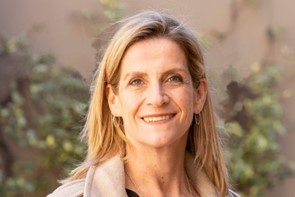ATMS Speaker Q&A
- ATMS Speaker Spotlight
- Dr Kate Levett
Speaker

Dr Kate Levett
Dr Kate Levett is an Acupuncturist, educator and researcher, specialising in women’s health and maternity epidemiology. She is a Senior Research Fellow at the University of Notre Dame Australia, Sydney School of Medicine, and an adjunct Fellow at the NICM Health Research Institute at Western Sydney University.
Q&As
I have been an Acupuncturist for a long time and have always been interested in women’s health particularly fertility, pregnancy and childbirth. I focused on hormonal transitions in women’s health, including puberty, pregnancy and menopause, as well as men’s fertility. I’ve found these areas of treatment so rewarding, because people often respond so well and you can really make such a difference. My practice is in Japanese acupuncture, and I have a really great community of practitioners from Australia and internationally. It’s a privilege to be able to be part of that community and have a brains trust to call on to discuss cases and approaches to treatment.
In 2018, I received an NHMRC Early Career Fellowship which is focusing on a particular method of research, called a prospective meta-analysis as a way to collaborate with other researchers interested in the same field to combine research methods and finding, but setting it up prior to starting any trials, so that we can increase the effectiveness of the research. The program of research is focusing on using complementary therapies for pain relief in labour delivered via an antenatal education program. It is the methodology which is the key to the outcomes for this fellowship grant, as it’s quite novel.
I have also been working with Debra Betts in New Zealand, investigating safety outcomes for acupuncture, and how we measure that. We have looked at assessing bias in trials to understand how safety outcomes are reported.
Debra and I have been collaborating on online course delivery during COVID – how to do online consultations, and training for health professionals, including midwives, doulas and childbirth educators on acupressure, gua sha and moxa to use with clients.
Research has become much more rigorous over the years, which had been one of the largest criticisms of the field of natural medicine or complementary therapies. However, at the same time, funding and training programs are becoming more restrictive, which gives some challenges to the area, but research continues to be positive and well conducted.
We are becoming more nuanced in our understanding of the medicine and building research frameworks that are more equipped to examine holistic outcomes that are relevant for acupuncture and other Chinese Medicine modalities.
In terms of personal experience at clinic, I am seeing a much greater recognition from the public about how acupuncture can be effective for hormonal issues, autoimmune conditions and chronic conditions, as well as for anxiety, insomnia and gut related problems.
With research, as funding is becoming more restricted, research may either get concentrated for people or institutions where a track record has been established, or grants are smaller, making it more difficult to conduct a project. Thinking forward and proposing methods which can combine groups or collaborations would be a good way to go.
Personally, I hope to concentrate on refining techniques for better diagnosis and treatment of complex conditions. I think the after effects of COVID may become more evident with latent stress conditions, and then once the economy bounces back, a baby boom is always on the cards!
Providing holistic care and spending time understanding the origin of what is happened to this person. Unravelling the string of people’s stories about their health is really important. Not just treating the symptoms they’re presenting with. This is called Ben Biao in Chinese Medicine – it means root and branch.
How does acupuncture work?
There are many theories, and the evidence tells us certain things – for example with improved imaging techniques we can see previously unknown structures within the circulatory and respiratory systems, or within the fascia, that point to mechanisms of action for acupuncture.
There are brain imaging techniques which show us the way acupuncture promotes hormonal release and it seems to be the body’s self-regulatory mechanisms at work. The brain and body respond by upregulating hormones and neurotransmitters when needed, such as fluid or blood building, and then downregulating them when needed, in cases where inflammation is driving a condition. It really depends on the person as to how much detail I will go into, or what kind of information they’re interested in.
I have been incredibly privileged to have two teachers who both trained with Master Nagano in Japan and demonstrate how to be as a person as well as amazing teachers and practitioners.
Yoshi Shimamura and Kiiko Matsumoto, who we call Shimamura Sensei and Kiiko Sensei are my teachers.
Kiiko Sensei practises in Massachusetts, and she has a student Monika Kobylecka who does a lot of teaching of Kiiko style acupuncture. She is incredibly generous with her time and knowledge, and has been doing hour long presentations every Monday morning during COVID. The style of acupuncture is so astonishing, and results for patients are fabulous.
Shimamura Sensei practises in Japan and has a student and translator Seishiro. They have been coming to Australia every year for the past 6-7 years and do seminars with a core group of us from Sydney, Melbourne and Brisbane. Shimamura Sensei is the warmest and kind hearted person, and he is so giving and generous with his knowledge. He has a magic touch that I aspire to, and I admire his and Seish’s dedication and skill.
On this page
Need a Practitioner?
Find a trusted and qualified natural therapist near you via the ATMS ‘Find a Practitioner’ search tool.
Find A Practitioner